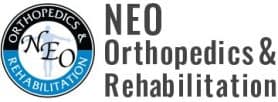Most humans are blessed with the ability to sense physical pain. Pain, acute or chronic, lets us know there is something occurring that our bodies recognize as threatening or dysfunctional. Touch a hot stove? Pain makes us quickly withdraw that touch to negate the threat of burned skin. Painful tingling and/or a numb feeling in the palm of your hand, especially when you flex the affected wrist, which can extend into the thumb, index finger, and part of the middle finger? That pain makes us aware that “something isn’t working as it should” (dysfunction) in the proximity of the painful sensation(s). In this case, compression of the median nerve as it runs through the carpal tunnel to the palm and above mentioned digits. We will usually attempt, at the very least, to stop flexing the affected wrist in such a case as to not exacerbate our own discomfort, and hopefully make an appointment to see a doctor. If we could not experience physical pain, we would be at constant risk of serious injury.
In being made aware, through pain, of a threat to or a dysfunction of the body, we can take steps towards finding a solution and eliminating or decreasing the physical pain we experience. We can take invasive measures such as surgery or noninvasive measures such as physical medicine like physical therapy. We can take the pharmacologic approach, under doctor supervision, and begin to take NSAIDs such as Tylenol or ibuprofen. Maybe a psychological approach that involves meditation? We can even draw on eastern medicine by having a trained acupuncturist place needles in specific points of our body. When considering ways in which pain is, to varying degrees, successfully treated by humans, the list is extensive. The list is extensive because, unfortunately, there isn’t one way of treating pain that works for every person. For the individual sufferer who finds relief in one way, many different ways might well have been tried before they achieved remission. In the case of the author who has had painful golfer’s elbow in both joints for over six months: stretching, rest, ice, dry needling, taping, and NSAIDs have been used with some success, but the greatest relief has been found using Low-Level Light Therapy (LLLT) on the painful regions. From elbows that were painful to the touch, to almost no pain after a 20-minute treatment is a recurring experience.
LLLT uses infrared (IR) light either from a laser, filtered lamp, or LED to penetrate tissues and exert an effect on the mitochondria of cells by increasing their speed of activity. The mitochondria in our cells produce the energy necessary for the cells to perform their job, i.e. repairing damaged tissue. IR light also triggers the release of nitric oxide from both red blood cells and the endothelium (the inner lining of blood vessels). Nitric oxide release causes the blood vessels to relax and dilate allowing greater blood flow to a painful/injured area increasing the amount of oxygen and nutrients available to be used for tissue repair and to decrease inflammation. This can mean a decrease in pain. The above is only a brief illustration of how LLLT is thought to cause pain relief.
In a study conducted with elderly people who had knee osteoarthritis (“wear and tear arthritis”), their reported knee pain decreased by half after treatment when compared to their reported pain before treatment. In another study involving people with chronic low back pain, their average reported pain was approximately 7 out of 10 on a 10 point scale before any treatment. After treatment that average pain rating of 7 out of 10 fell to an average of 3 out of 10. Finally, in the conclusion of an article that cited multiple studies, the authors stated, “The previous discussion has shown that LLLT is beneficial for pain relief and can accelerate the body’s ability to heal itself”.
Perhaps the reader has tried one or more of the myriad ways available to him/her to treat some physical pain they currently experience. Maybe they have found some relief, maybe they haven’t. Maybe they would like a greater relief in addition to what they already have. Whatever the case, LLLT appears to be a safe, non-invasive option when they’ve got pain.
Interested in learning more or scheduling a free evaluation? Contact Josh Baker at jgbaker0199@gmail.com
Studies and article referenced
Stelian J, Gil I, Habot B, et al. Improvement of pain and disability in elderly patients with degenerative osteoarthritis of the knee treated with narrow-band light therapy. J Am Geriatr Soc. 1992;40(1):23-26. doi:10.1111/j.1532-5415.1992.tb01824.x
Gale GD, Rothbart PJ, Li Y. Infrared therapy for chronic low back pain: a randomized, controlled trial. Pain Res Manag. 2006;11(3):193-196. doi:10.1155/2006/876920
Cotler HB, Chow RT, Hamblin MR, Carroll J. The Use of Low-Level Laser Therapy (LLLT) For Musculoskeletal Pain. MOJ Orthop Rheumatol. 2015;2(5):00068. doi:10.15406/mojor.2015.02.00068
